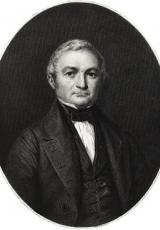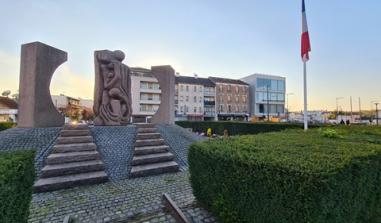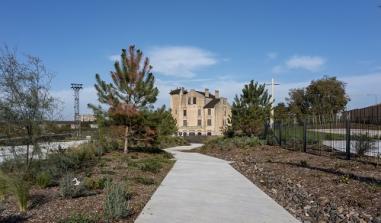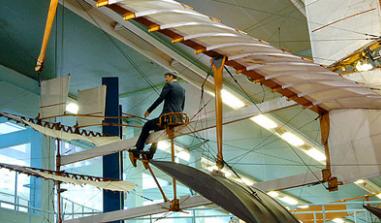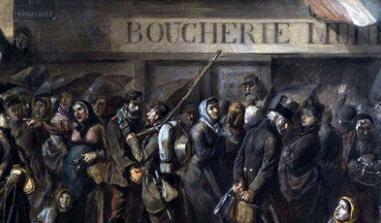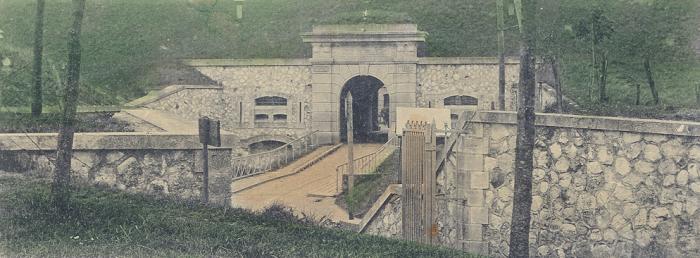
Postcard of the fort Source: Association de Sauvegarde du Fort de Villiers
Fort de Villiers is a witness of the fortifications of Paris and the history of the Third Republic.
"Bridgehead on the Marne" (Noisy-le-Grand - 93)
1871.
The first ring of forts built with the purpose of protecting the capital from the enemy did not prevent the defeat of 1870.
In the space of a few weeks, Bismarck's troops had surged into Paris, the Empire's armies had surrendered, Napoleon III had been taken prisoner, and the armistice, signed in January 1871, led to Alsace-Lorraine being annexed to the German Empire.
On 21st March 1874, the project of the army commission was adopted at the National Assembly, by 386 votes to 191.
The bill of 27th March 1874 concerning the building of new forts around Paris authorised the Prime Minister, Adolphe Thiers, to erect a fortified "ring" around Paris as part of a comprehensive fortification project, implementation of which was entrusted to General Séré de Rivières, at the time Director of Engineering:
"For this we will need to occupy, probably between Noisy-le-Grand and Villiers, a position creating a bridgehead and at the same time covering the waterways of the bridges at Brie, Nogent, Joinville and Champigny.
The fort constructed at this point will be the most effective way of protecting the perimeters of the Fort de Nogent, and will be connected to the Chelles-Vaujours line." 60,000,000 old francs (one Germinal Franc = 1.42 euros in 2007) were allocated to the works and purchase of land.
Between 1874 and 1881, 18 forts, 34 defensive batteries and 5 redoubts were built around Paris The eastern part of this defence system was made up of the Fort de Villiers, which today falls within the town of Noisy-le-Grand (1878-1880), the Fort de Champigny (1878-1880) and the Fort de Sucy (1879-1881).
An implementation order of 31st December 1877 set out the provisions for the construction of Fort de Villiers in the town of Noisy-le-Grand (at the time in the Seine et Oise département), originally named the "Bridgehead on the Marne".
Constructed on the heights above the banks of the Marne at an altitude of 111 metres, the fort was intended to prevent the enemy from establishing itself there. The works commenced in 1878 and were finished in 1880.
The plan marking the boundary, the access zone and the remarkable polygon was approved by the Minister for War on 18th October 1882 and officially recognised and approved by decree on 10th September 1883.
The budget for the construction of Fort de Villiers had been estimated at 11,000,000 francs for the work and 1,000,000 francs for the purchase of land.
The Fort de Villiers today
Property of the Ministry of Defence and afterwards of the public EPAMARNE institution, in July 2001 the latter donated it to the town of Noisy-le-Grand.
The area created within the current perimeter of the Fort de Villiers covers approximately four hectares - originally seven hectares - on the edge of the A4 motorway in the town of Noisy-le-Grand, in the Montfort district, on the edge of the town of Villiers-sur-Marne, to the south of the Seine Saint-Denis département.
Some sporting associations were housed there until December 2007.
Since then, access to it has been prohibited by a municipal danger notice, principally because of the state of the access walkway and trees that died or became unstable following the storm of 2000.
The Fort de Villiers is one of the witnesses of the fortifications of Paris and the history of the Third Republic, from Louis Adolphe Thiers, President of the Republic and head of the executive from 1871 to 1873, to Patrice de Mac-Mahon, President of the Republic from 1873-1879.
It also bears witness to the developments in military architecture and the transition from bastioned architecture to underground architecture.
The aims of the Association de Sauvegarde du Fort De Villiers (Association for the Protection of the Fort De Villiers or ASFV), created in March 2008, are to promote initiatives designed to improve awareness of the fort, in support of the historical and photographic archive documents and the project for its conservation and improvement.
Fort de Villiers
Avenue Paul Belmondo
93160 Noisy-le-Grand
E-mail : contact@asfv.eu
Visits Warning! Fort de Villiers is not open to visitors. The site is dangerous and is not protected by security (entry is prohibited).
Contact the Mairie in Noisy-le-Grand to request access.
Bibliographical sources Annals of the National Assembly. Government bills, proposals and reports. 1874 List of the law bills of the French Republic. 1874
Fort de Villiers
Quizz : Forts et citadelles
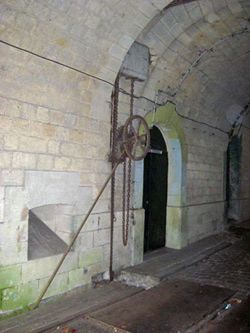
Le pont-levis Pilter. Source : Association de Sauvegarde du Fort de Villiers
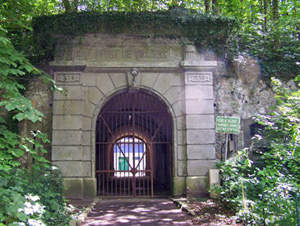
Entrée du fort. Source : Association de Sauvegarde du Fort de Villiers
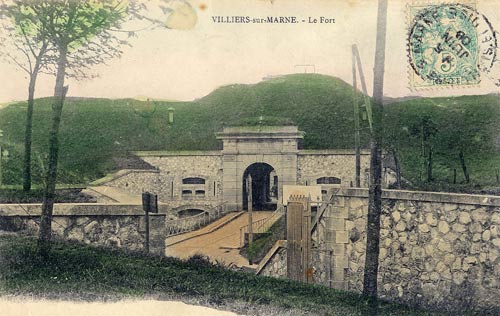
Carte postale du fort. Source : Association de Sauvegarde du Fort de Villiers






